Is Bounce Rate Killing Your Website's Rankings?

Maybe you have some idea what 'bounce rate' is, or have heard it is an important metric for your website. What you don't know about it, however, might be why your website isn't performing as well as you had expected. Let's take a look at what bounce rate really is, how it is affecting your site's rankings, and what you can do to improve it.
The simplest explanation of bounce rate is: A visitor comes to a page on your site and leaves your site without visiting any other page. Thus, bounced. It can also include whether or not the visitor interacted with your page in some way that Google can identify (such as by playing a video). Bounce rate is measured as a percentage: the higher it is, the more people are bouncing off your website.
Why Should You Care About Bounce Rate?
In short: because bounce rate affects your Google search rankings and organic search is a top driver of website traffic. Google's search algorithm uses bounce rate data to improve the quality of its search results. A high bounce rate suggests your page is low quality or not relevant to what the user performing the search was looking for. It tends to suggest that the user came, found it not useful, and left. That's not what Google wants for its users.
You can find the bounce rate for your website in your Google Analytics dashboard. It is important to note though that bounce rate is just a metric-a measurement. What you need to focus on is what is causing the bounce rate to be high, so you can improve it.
What Causes a High Bounce Rate?
There can be several factors, but they can all be summed up by the term "engagement." If a user engages or interacts with your website in some way, it is a clue to Google that they are interested in it and the content they found is what they were searching for. This, in turn, tells Google your site deserves to rank for that search query.
Engagement can be measured by your user visiting another page, by their triggering an "event" (such as a download, video play, clicking a social media share button), or by making a purchase. Any one of these shows Google that the user is engaged and interacting with your Web page. Visiting the page and leaving without any of the above actions will cause a bounce. High bounce rate, then, is caused by lack of engagement.
How Do You Increase Engagement?
The simple answer is: Give your visitor the experience Google wants them to have. In other words, create a web page that is interesting and with which the visitor will interact in one or more of the above ways. Below are a few simple hacks to lower your bounce rate:
1. Add a Useful Video
If your Web page is informational, and is designed to answer a "how-to" search, such as, "how to draw a rose," it would be very likely that a video, demonstrating how to draw a rose would get clicked on by a visitor of that page. Across industries, videos can provide additional information like how a product looks in real life or even additional ways to use the product a person has already purchased. So, by providing an interactive element (the video) which is useful, or even necessary to answer the visitor's question, you are able to increase user interaction.
2. Add a Download
Similar to the purpose of the video, you could include a downloadable list of steps, or graphic that a user might want to print and keep handy as they attempt to draw a rose. You could also have a downloadable image of a rose, which they can print out and use as their model to draw from. There are unlimited ideas for downloads - like an infographic with several different ways to use a product. It just takes a little thinking to come up with something that will be valuable to your visitor.
3. Add Internal Links
Since bounce rate is best known by the definition of "single-page visit," you should also be thinking of how to get the visitor to visit another page on your site. Perhaps one of the simplest ways to do this is by creating useful internal links on your website.
For the user visiting your page on "how to draw a rose," you should think of 'what else do they need to know?' Think of other questions that your post might not answer, but may be answered in another post or page on your website. It should be information that the visitor really needs, or would be highly interested in. Thus, they will be interested enough to click the link.
For example, you might explain that to draw a life-like rose, it is vital that they understand the concept of "perspective," and link to your post that explains the concept of 'perspective in art.' If you give them a link to something very desirable and really sell that click, you have just improved your bounce rate, as well as given further value to your visitor.
What Does Google Want?
If you want to lower your bounce rate, there are many things you can do. Ultimately, it often just requires putting in the extra effort to make your content more engaging and useful, which, in the end, is what Google wants for their users.
About the Author

Kurt Enget is the director of marketing at Starfire Web Design, a website design and digital marketing agency in Las Vegas, NV. Kurt is a recognized online marketing professional and national seminar speaker on the subjects Web design and SEO. Connect on Facebook or Twitter @StarfireWeb








